Leslie Griffin, Heal the Bay’s chief water quality scientist and Beach Report Card manager, likes to kiss and tell. Here’s her list of the cuddliest spots for couples along the California shoreline.
Wanna enjoy a long walk on the beach?
I know it sounds like a line, but this lovers’ activity is a cliché for a reason. A seaside stroll proves both calming and romantic, with the vast ocean rippling along the shore while your toes sink into the cool sand. Or maybe your dream beach date consists of gazing at a gorgeous sunset while you enjoy a seaside picnic.
Either way, we are all about getting a little sandy, whether with a loved one, a friend, or for a little solo escape into the outdoors for some dedicated me time.
Here are 10 spots we love for love (and their great water quality too!):
Torrey Pines, San Diego
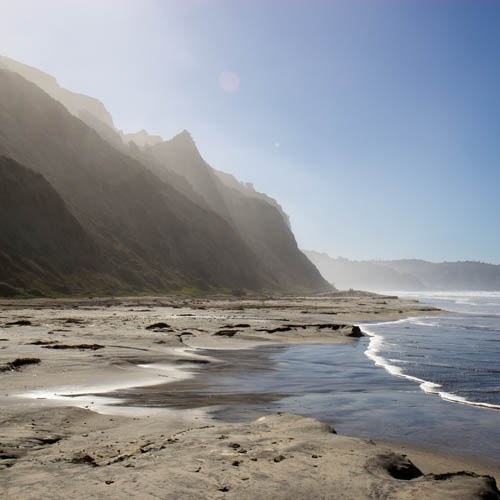
Source: Dan_H, flickr
What we love about it: Torrey Pines State Beach has picturesque views of the San Diego coastline and the adjacent Torrey Pines State Reserve is filled with little trails leading down to the shore. We recommend that you only take marked trails and watch your footing, but the views are worth the adventure.
What to do here: We love the Torrey Pines Trail to Black’s Beach in the morning for a beautiful way to start your day. Fair warning: some nudists like to visit this beach as well.
Water Quality: The only sampling site at Torrey Pines is at the Los Penasquitos Lagoon outlet. That site received good grades in our most recent annual Beach Report Card.
La Jolla, San Diego
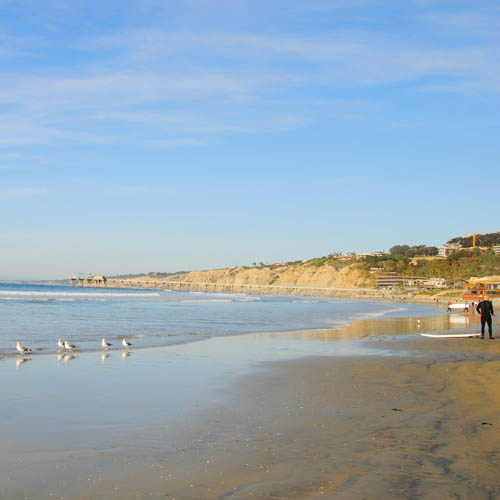
Source: Wikipedia Commons
What we love about it: This spot is great for lovers and families alike, with plenty of adventure to be had by all ages.
What to do here: This is the perfect spot for a SUP (stand up paddleboard) adventure, snorkeling, kayaking, or even just a picturesque walk along the beach. For stunning ocean views over dinner, check out the Marine Room at the La Jolla Beach and Tennis Club.
Water Quality: La Jolla shores received great grades in our annual report last year.
Victoria Beach, Orange County
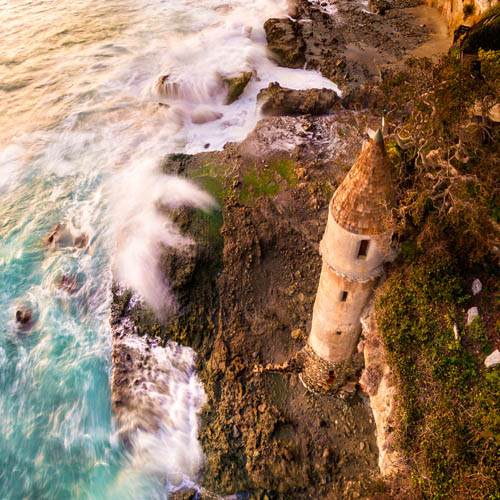
Source: Daniel Peckham, flickr
What we love about it: Straight out of a fairy tale, this shoreline spot is guarded by La Tour, a 60-foot castle-inspired tower. Built in 1926, the structure provided beach access for a home on the cliff above.
What to do here: Looking to be someone’s knight in shining armor? Look no further. To get here, walk to the north end of Victoria Beach in Laguna Beach, around the bluff and past another sandy section of beach. (This is a privately owned structure, so while you can walk up to it, please do not try to go inside or climb on the structure.)
Water Quality: Victoria Beach received A+’s across the board in our last annual report.
Crystal Cove State Park, Orange County
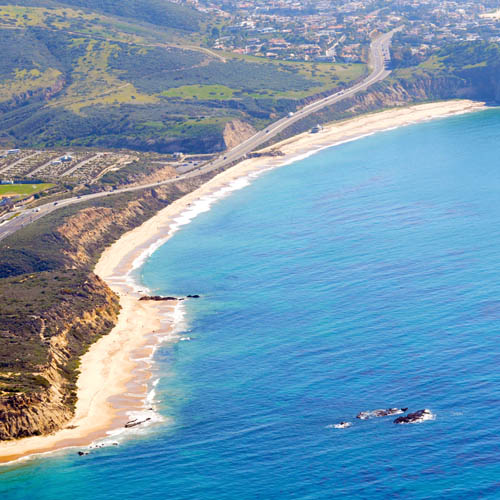
Source: Wikipedia Commons
What we love about it: With such a long swath of open sandy shores, this is an ideal spot for a romantic seaside stroll, or perhaps for a love-inspired photoshoot.
What to do here: If you’re looking for post-beach walk eats with an ocean view, the Beachcomber Café is a fun option.
Water Quality: Crystal Cove has great water quality in the summer or whenever the weather has been dry. Given the buckets of rain we have (thankfully) gotten this year, make sure to heed any beach posting signs you may see.
Palos Verdes Peninsula, Los Angeles
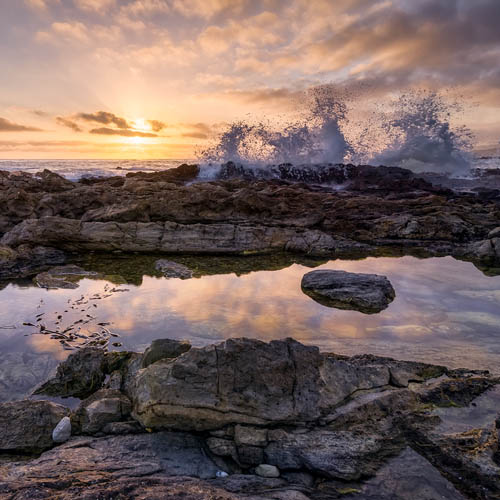
Source: Mark Esguerra, The Marke’s World
What we love about it: We love the PV areas so much, we had to lump the whole peninsula together as one of our top locations. Palos Verdes wraps around from the base of the South Bay down to San Pedro, and features beautiful neighborhoods, coastal trails, clean beaches, and tidepool adventures.
What to do here: If you’re looking for some marine biology-inspired adventure, time your visit for low tide to go tidepooling at Abalone Cove. For a short hike and a hidden rocky beach, check out Palos Verdes Bluff Cove.
Water Quality: The Palos Verdes area is home to multiple Honor Roll beaches, including Abalone Cove Shoreline Park.
El Matador State Beach, Malibu
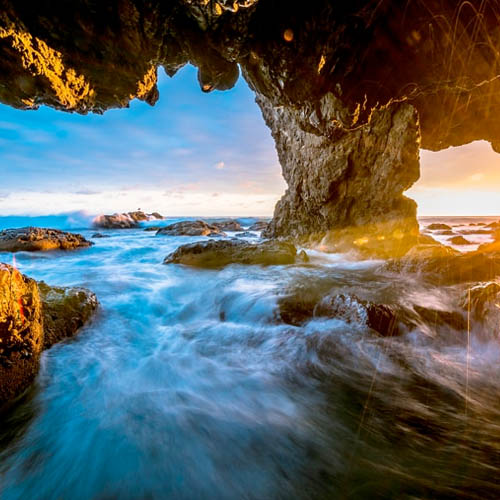
Source: Elliot McGucken, 500px
What we love about it: This was easily the top rated romantic spot by Heal the Bay staff. Dramatic cliffs and coves (and even secret sea caves) make this beach feel like the backdrop of a steamy Hollywood romance scene. Whether it’s energizing a new flame or a longtime squeeze, you can expect El Matador to light your fire.
What to do here: Explore the dramatic landscape, take Instagram-worthy photos, find little hideaway spots for you and your date to share secret kisses, and wrap up your evening with a gorgeous sunset view.
Water Quality: El Matador is an Honor Roll beach with awesome water quality.
Arroyo Burro, Santa Barbara
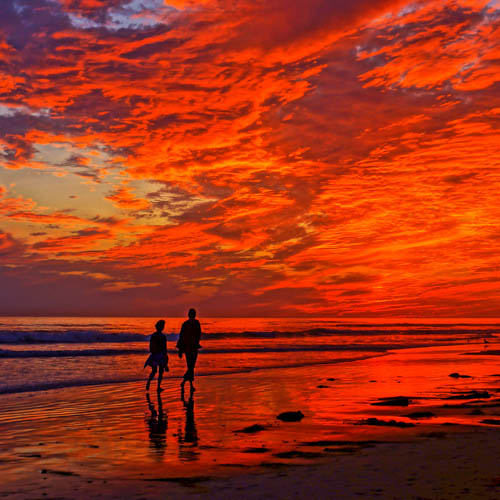
Source: Damian Gadal, flickr
What we love about it: Santa Barbara is the perfect little getaway for a weekend of romance. If you’re looking for some time together to rest, rejuvenate, and rekindle the fire, Santa Barbara is the perfect place.
What to do here: We love Arroyo Burro for a sunset walk, and with plenty of parking and restroom access it’s a stress-free beach walk experience.
Water Quality: Arroyo Burro has great water quality in the summer or whenever it has been dry enough that the creek hasn’t breached. Make sure to heed any beach posting signs you may see if you’re feeling like taking a dip. But if the creek is flowing, be sure to stick to the sand over the waves.
Big Sur Coastline, Monterey

Source: Wikipedia Commons
What we love about it: Another area that is just so beautiful, we can’t limit it to just one beach. The shoreline in Big Sur is renowned for its rustic coastal beauty. A drive along the twisty coastline is certain to inspire awe. Pull off whenever your heart desires, and be sure to take photos so you can revisit the view whenever you like.
What to do here: McWay Falls is a stunning spot where you can watch a perfect little waterfall pouring directly to the beach. The Bixby Canyon Bridge is another cult favorite, and there’s even a Death Cab for Cutie song to match. There are plenty of hiking trails, camping sites, and little cafes to warm up in.
Water Quality: Monterey water quality testing only extends as far south as Carmel, so while there aren’t any sampling sites to rely on, the area is un-urbanized and thus less likely to have bacterial problems.
Baker Beach, San Francisco
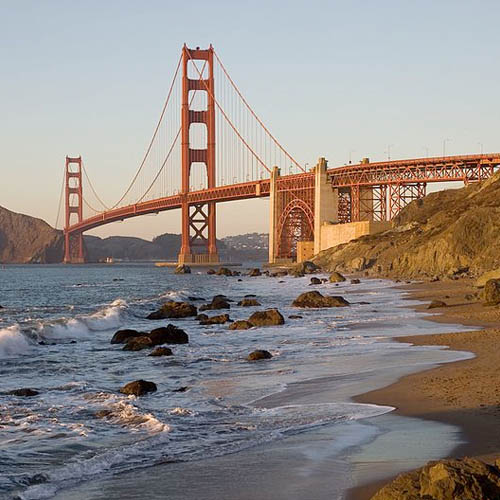
Source: Wikipedia Commons
What we love about it: If you’re in the Bay Area and looking for an ideal view of the Golden Gate Bridge, this is our favorite sandy spot.
What to do here: The dramatic backdrop makes this spot ideal for a photo shoot, or even just a quick selfie-sesh. We’d recommend cuddling up for a romantic picnic and enjoying the sunset together.
Water Quality: Just be sure to avoid swimming near the creek outlet if you’re looking to take a penguin dip.
Point Reyes National Seashore, Marin County

Source: Wikipedia Commons
What we love about it: The farther north you go in California, often the more dramatic and rural the coastal landscape. This National Seashore is a prime example of that raw beauty, and it is sure to take your breath away.
What to do here: There a quite a few campgrounds and hiking trails within the area if you’re looking to get back in touch with nature.
Water Quality: Marin County no longer samples within this area. The closest active sampling station is Bolinas Beach (another beautiful spot), just south of Point Reyes.
Heal the Bay’s Beach Report Card is the only comprehensive analysis of coastline water quality in California. We monitor more than 500 beaches weekly from Oregon to the Mexico border, assigning an A to F grade based on the health risks of swimming or surfing at that location.



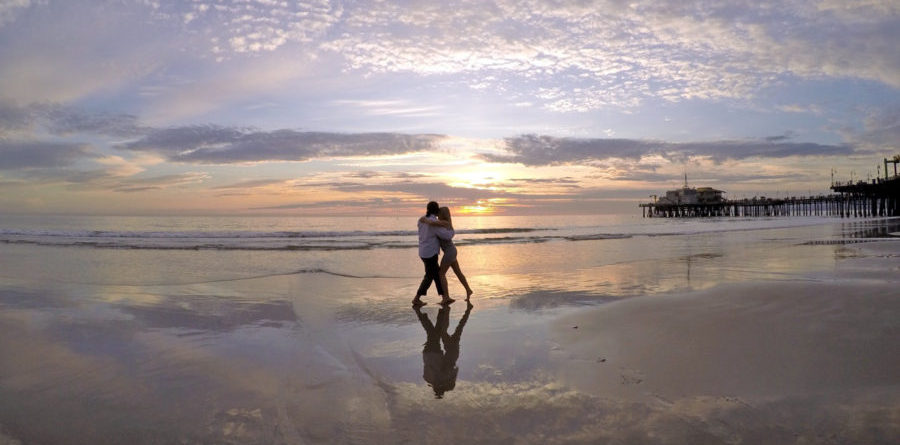
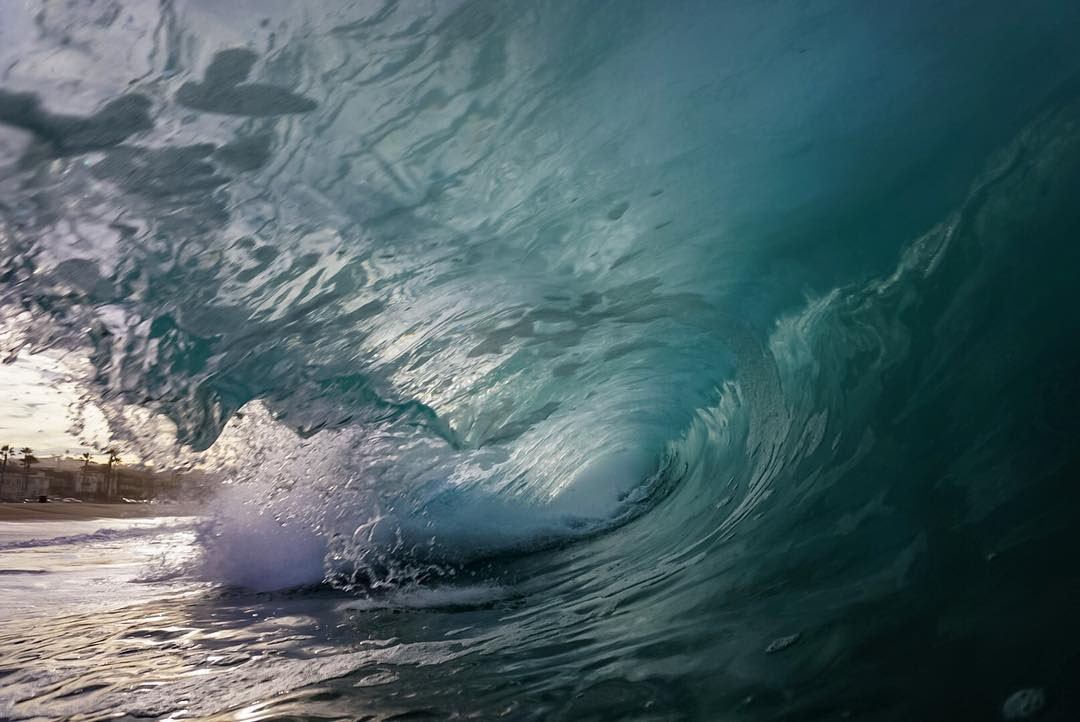 Our NowCast system uses statistical models to provide daily water quality information during the AB411 season. These models predict the concentration of bacteria in the water every morning, and are derived from years of water quality data and a whole lot of environmental variables that impact bacteria levels. NowCasting helps us answer what we don’t readily know – how much bacteria is likely in the water each morning, and thus if it is safe to swim – by looking at what we do know – what was the weather like yesterday, were there a lot of waves this morning stirring up the water, is the nearby river a’ flowing, etc. All of this data crunching and statistical hog-wrestling boils allows us to predict whether beach bacterial concentrations are likely to be safe or hazardous each morning.
Our NowCast system uses statistical models to provide daily water quality information during the AB411 season. These models predict the concentration of bacteria in the water every morning, and are derived from years of water quality data and a whole lot of environmental variables that impact bacteria levels. NowCasting helps us answer what we don’t readily know – how much bacteria is likely in the water each morning, and thus if it is safe to swim – by looking at what we do know – what was the weather like yesterday, were there a lot of waves this morning stirring up the water, is the nearby river a’ flowing, etc. All of this data crunching and statistical hog-wrestling boils allows us to predict whether beach bacterial concentrations are likely to be safe or hazardous each morning. The first major finding of the season was expected: the drought continues to positively impact beach water quality. Think about it like this: less rain means less runoff which means less bacteria in the waves. And as Californians continue to conserve water, there is less dry-weather runoff from outdoor watering (nice work, by the way!). Every beach in the NowCast program (except at the Santa Monica Pier) recorded water samples that came back under sample limits (the levels of bacteria below which it is reasonably safe to swim), much cleaner than those beaches’ historical trends! This is great news for California beachgoers – they were able to enjoy cleaner than average conditions this summer at the NowCast beaches, something that we were able to inform them of on a daily basis.
The first major finding of the season was expected: the drought continues to positively impact beach water quality. Think about it like this: less rain means less runoff which means less bacteria in the waves. And as Californians continue to conserve water, there is less dry-weather runoff from outdoor watering (nice work, by the way!). Every beach in the NowCast program (except at the Santa Monica Pier) recorded water samples that came back under sample limits (the levels of bacteria below which it is reasonably safe to swim), much cleaner than those beaches’ historical trends! This is great news for California beachgoers – they were able to enjoy cleaner than average conditions this summer at the NowCast beaches, something that we were able to inform them of on a daily basis.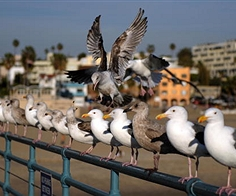 That being said, we did have one site with more issues than the rest: Santa Monica Pier. The Pier has a chronic history of water quality problems. From 2008-2015, it experienced 28% and 10% exceedance rates for fecal coliform and Enterococcus standards respectively (two types of FIB) in the summer months. This season, it exceeded those FIB standards 41% and 10% of the time respectively, despite drought conditions. This suggests that water quality at Santa Monica Pier is especially affected by other factors in addition to rainfall. Because our models consider wave action, wind speed and direction, and tides, the fecal coliform model for Santa Monica Pier was able to predict 71% of actual exceedances, and 17% more exceedances than using days-old samples in the months of July, August, and September. This was the big result that gives us confidence in our models.
That being said, we did have one site with more issues than the rest: Santa Monica Pier. The Pier has a chronic history of water quality problems. From 2008-2015, it experienced 28% and 10% exceedance rates for fecal coliform and Enterococcus standards respectively (two types of FIB) in the summer months. This season, it exceeded those FIB standards 41% and 10% of the time respectively, despite drought conditions. This suggests that water quality at Santa Monica Pier is especially affected by other factors in addition to rainfall. Because our models consider wave action, wind speed and direction, and tides, the fecal coliform model for Santa Monica Pier was able to predict 71% of actual exceedances, and 17% more exceedances than using days-old samples in the months of July, August, and September. This was the big result that gives us confidence in our models.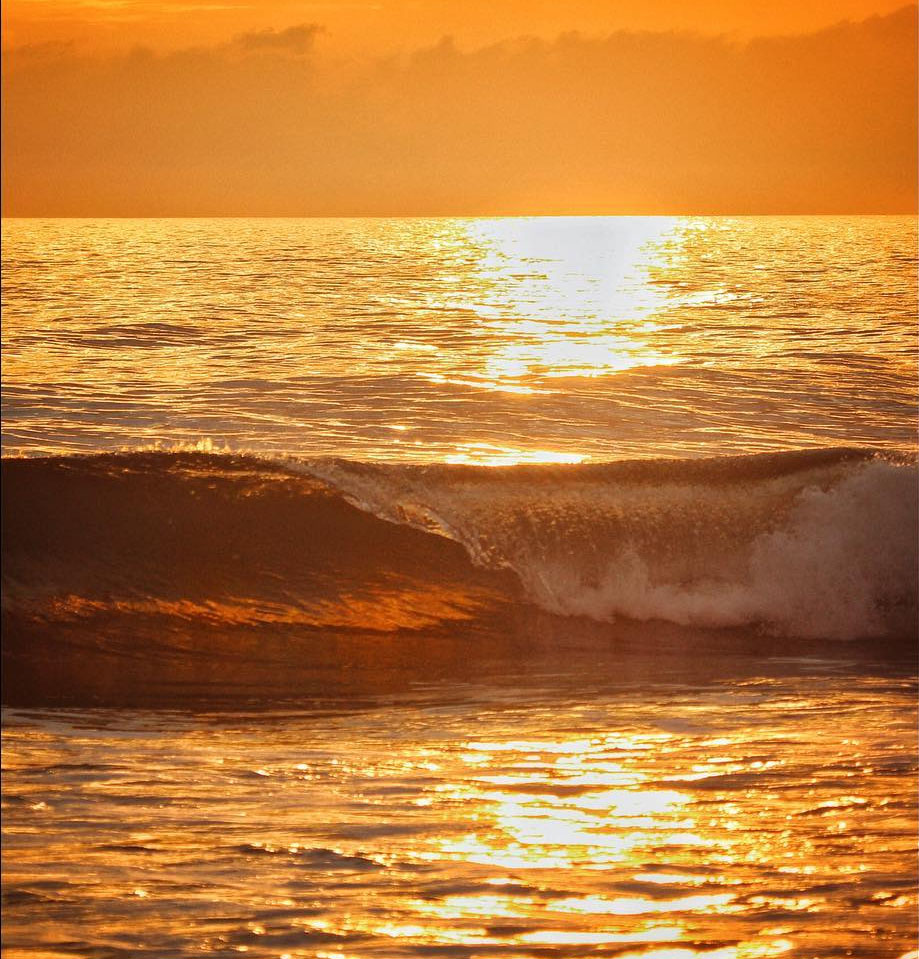 Looking forward, we’re excited for the California NowCast program to enter its third year. We’ve got a whole bunch of good stuff up next on the menu. For the Summer 2017 season, we are looking to add up to eight new beaches to the program. NowCasting will eventually expand farther along the California coastline, creating a truly statewide program. Winter models at beaches with heavy year-round use are also on our radar (in case you surfers out there were wondering). We’re designing new NowCast beach signage to post on days where water quality is predicted to be poor. And keep an eye out for our groovy new Beach Report Card website and mobile app, an update launching in 2017 that will look and function better than ever, giving beachgoers up to date water quality information on the fly.
Looking forward, we’re excited for the California NowCast program to enter its third year. We’ve got a whole bunch of good stuff up next on the menu. For the Summer 2017 season, we are looking to add up to eight new beaches to the program. NowCasting will eventually expand farther along the California coastline, creating a truly statewide program. Winter models at beaches with heavy year-round use are also on our radar (in case you surfers out there were wondering). We’re designing new NowCast beach signage to post on days where water quality is predicted to be poor. And keep an eye out for our groovy new Beach Report Card website and mobile app, an update launching in 2017 that will look and function better than ever, giving beachgoers up to date water quality information on the fly.